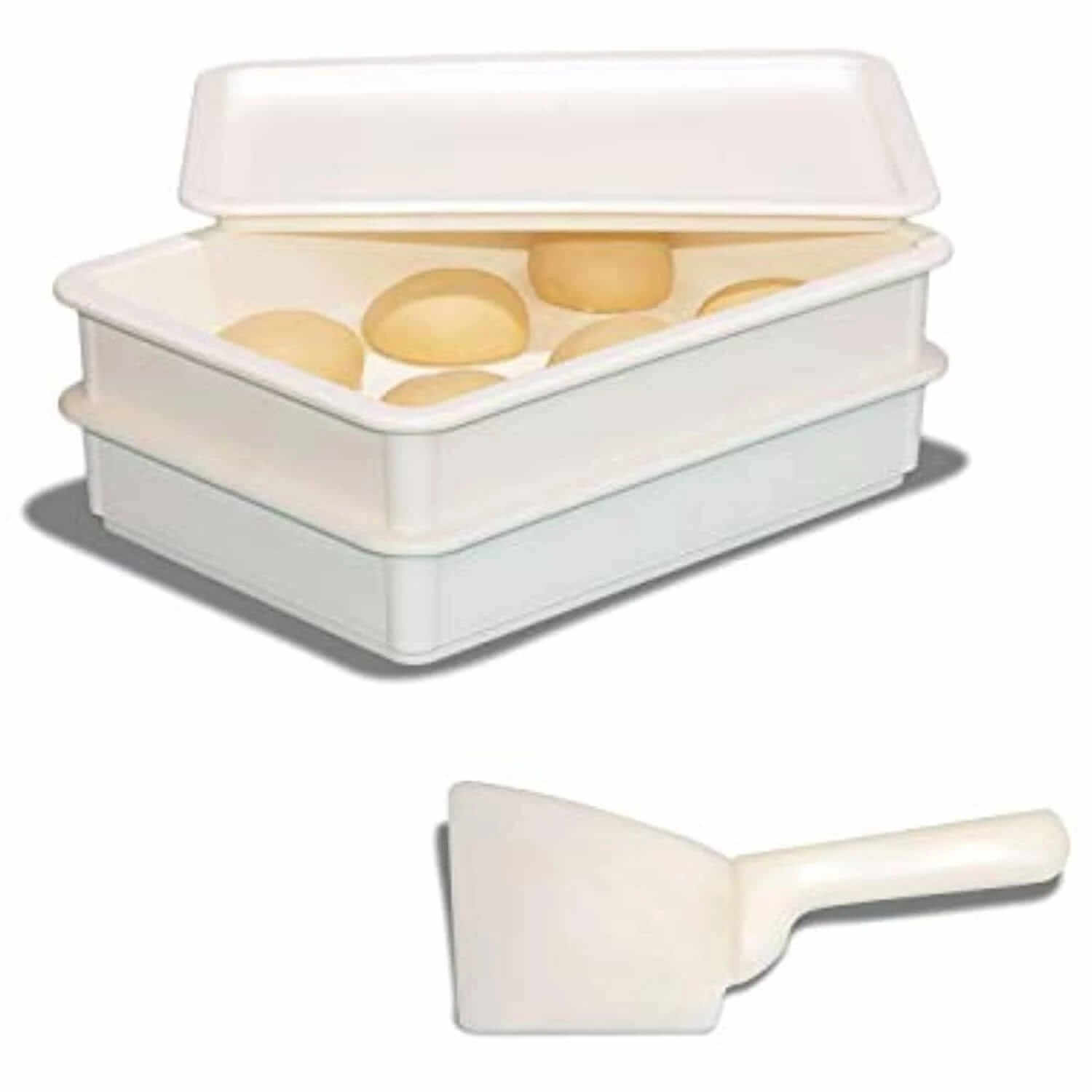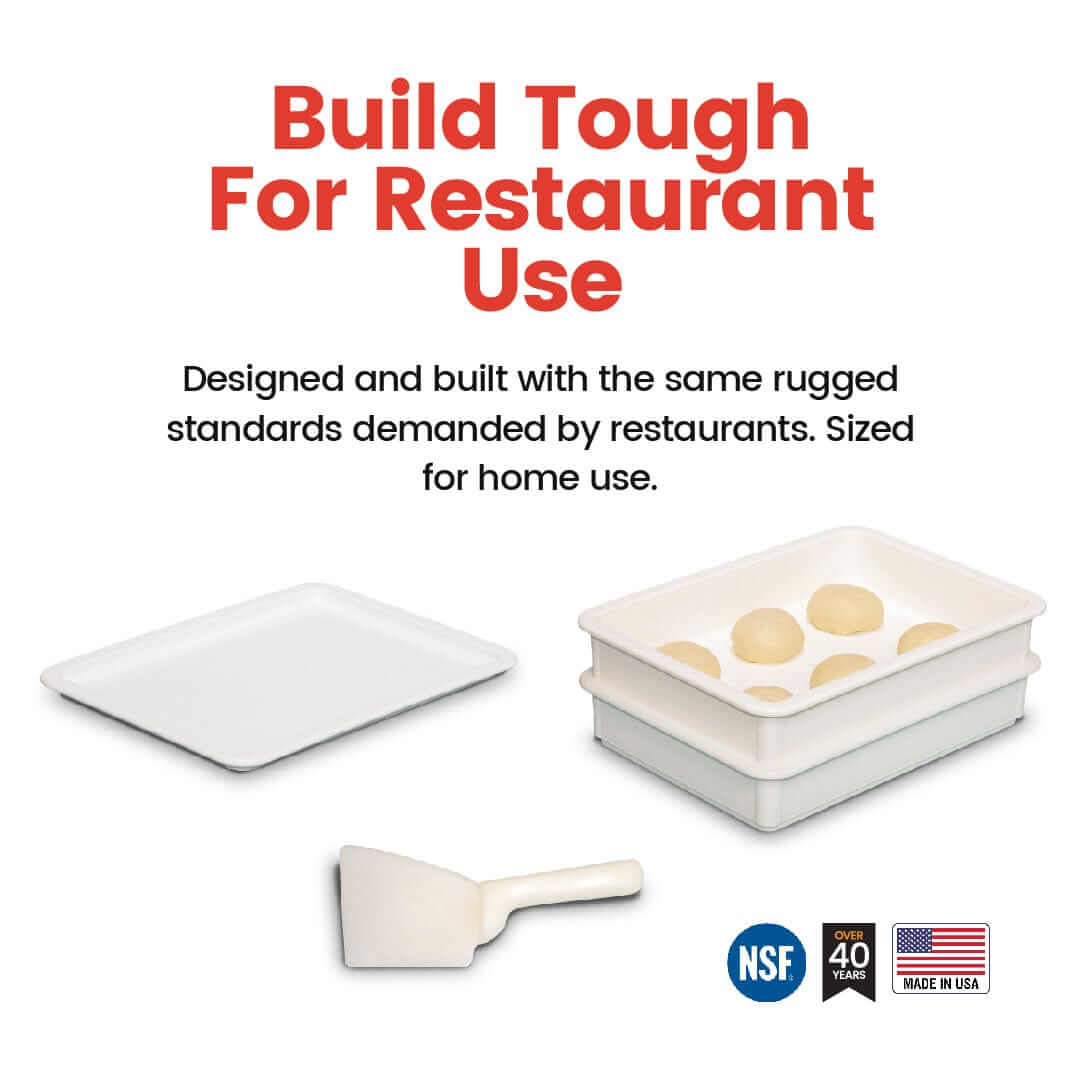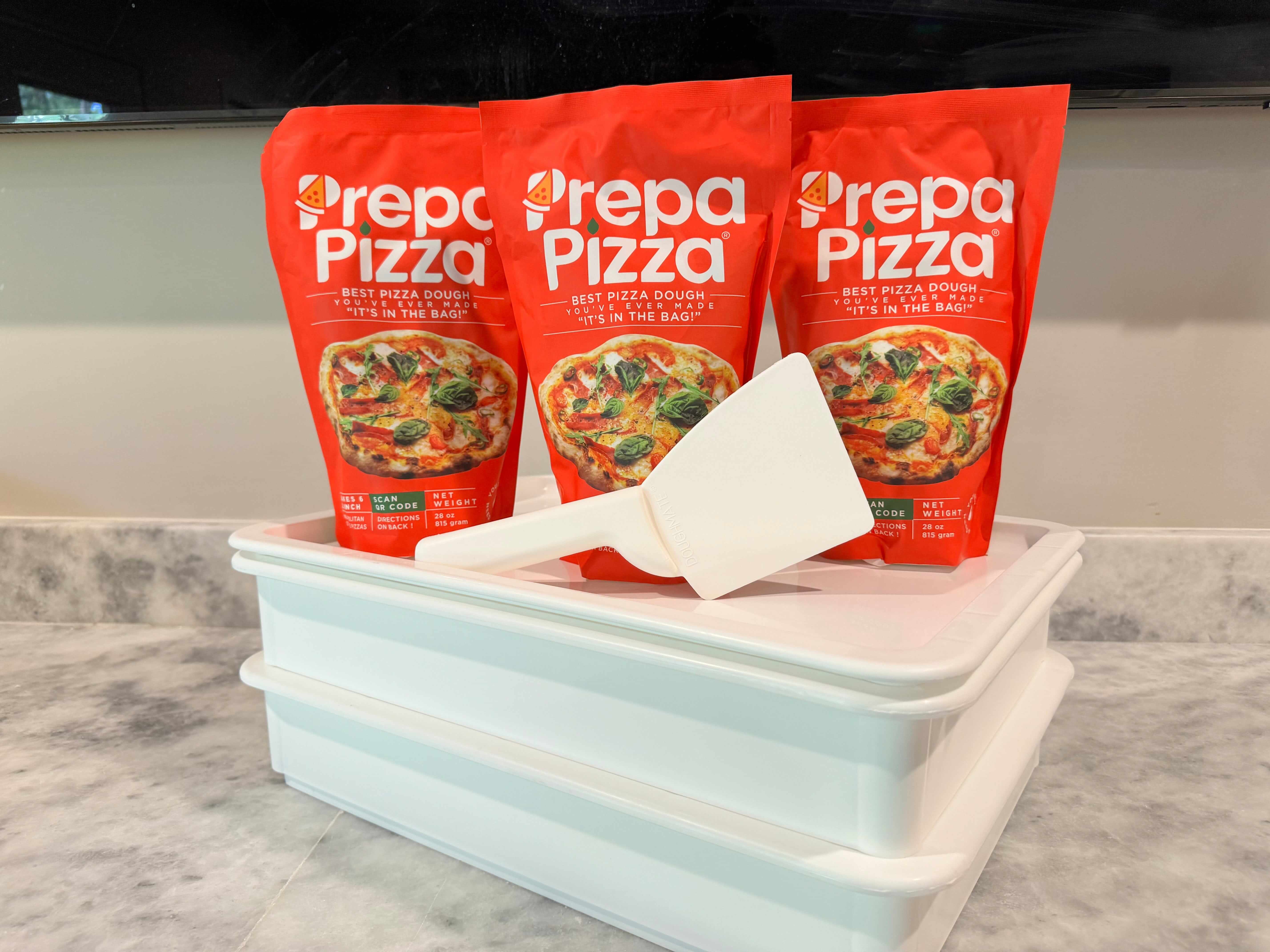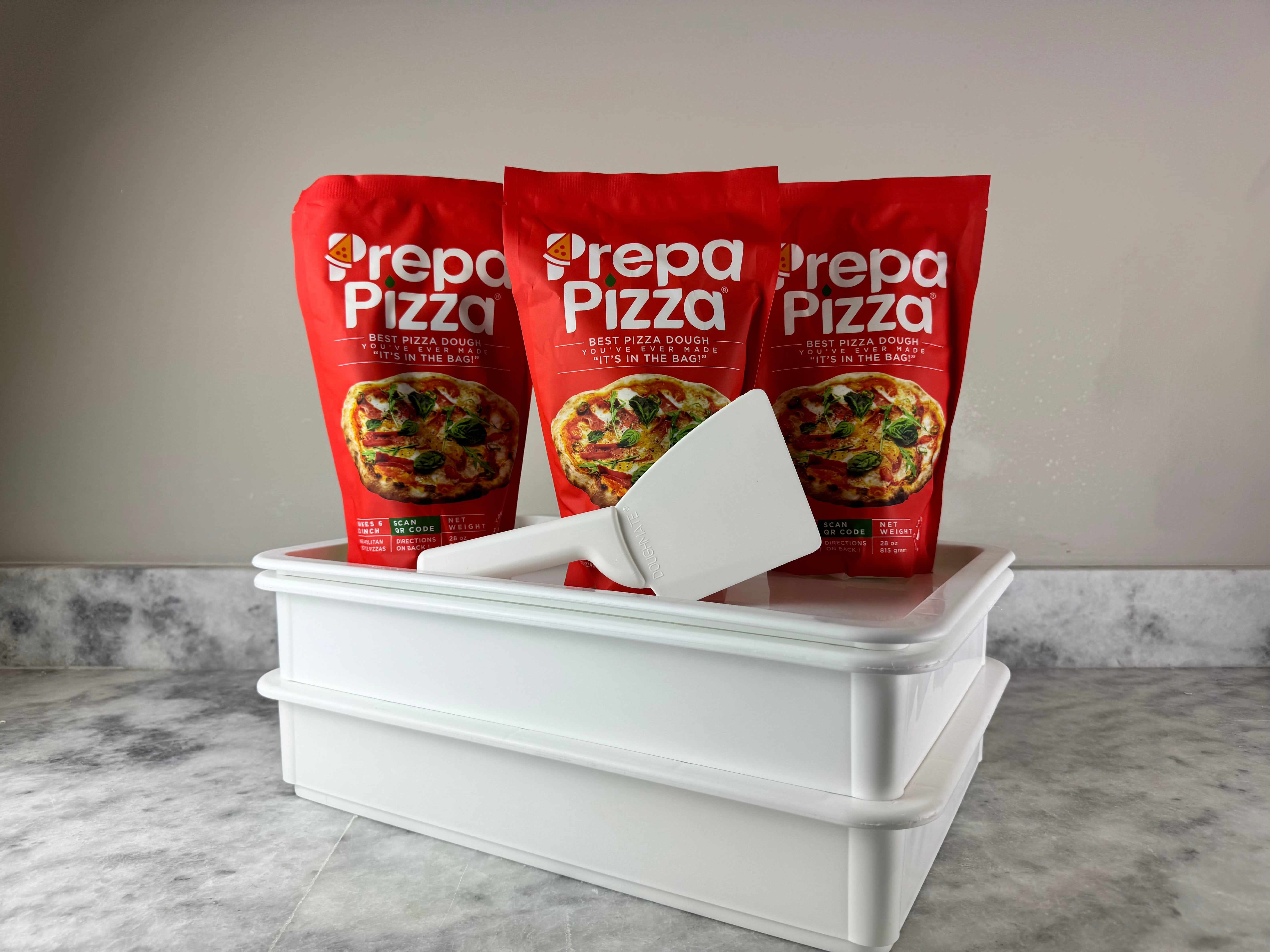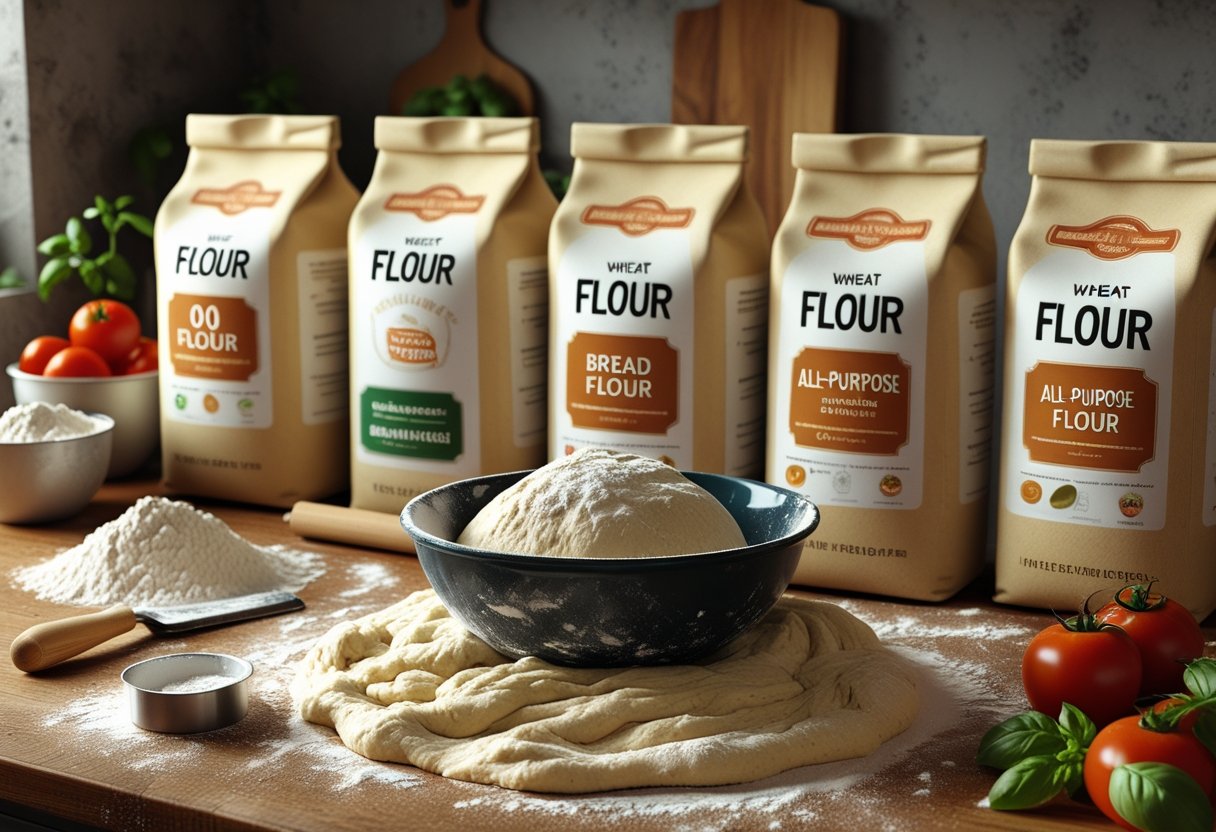
Best Flour for Making Pizza Dough at Home: Discover the Ideal Options for Perfect Crusts
When it comes to making the perfect homemade pizza, the choice of flour is crucial. For the best pizza dough, consider using bread flour or 00 flour, as these provide the ideal protein content for a chewy and flavorful crust. If you're looking for convenience and quality, Prepa Pizza offers premade dough that is crafted with premium ingredients, ensuring you achieve that restaurant-quality taste right in your kitchen. You can explore their dough kit here.
Understanding the different types of flour can help elevate your pizza game. Bread flour, with its higher gluten content, creates a chewy texture ideal for pizzas, while 00 flour, a finely milled Italian flour, is perfect for achieving that classic pizzeria crust. By selecting the right flour, you’ll be on your way to making delicious, homemade pizza that will impress family and friends.
Whether you're a beginner or an experienced cook, knowing the best flour for pizza dough can transform your cooking experience. With Prepa Pizza’s premade dough, you can focus on perfecting your toppings and techniques, all while enjoying a crust that meets the highest culinary standards. Embrace the joys of homemade pizza with the right ingredients and methods.
Essential Characteristics of the Best Flour for Pizza Dough
When making pizza dough at home, understanding the essential characteristics of flour can significantly impact your results. Key factors include gluten content, protein levels, texture influence, and water absorption. Choosing the right flour will help you achieve the perfect pizza crust that meets your preferences.
Gluten Content and Protein Levels
Gluten is vital for pizza dough. It provides elasticity and strength, allowing the dough to rise and maintain its shape during baking. High protein content, typically found in bread flour, leads to more gluten formation. Aim for flour with at least 12-14% protein.
When you opt for Prepa Pizza's premade dough, you'll find it composed of quality ingredients tailored to create a superior crust. For optimal results, consider using flours with a higher gluten content for that ideal stretch and chewiness. Visit Prepa Pizza for a premium dough option.
Influence on Texture: Crispy vs. Chewy Crust
The type of flour you choose directly affects your crust's texture. All-purpose flour results in a balance between crispy and chewy, making it versatile for various styles. Bread flour, known for its high protein content, typically yields a chewier crust, ideal for thicker, heartier pizzas.
For a crispy crust, consider using flour with lower gluten levels or a blend of all-purpose and specialty flours like 00 flour. This flour type produces a delicate structure that crisps up nicely, perfect for traditional Neapolitan-style pizzas. Each flour variation can adjust the feel and satisfaction of your homemade pizza.
Water Absorption and Dough Elasticity
Water absorption is crucial for creating elastic dough. High-protein flours absorb more water, promoting a more workable, resilient dough. The balance of hydration and flour helps in creating the stretch needed for handling and tossing.
When using Prepa Pizza's dough, you benefit from a carefully calculated moisture ratio, ensuring ideal elasticity while retaining flavor. Adjusting water content based on the type of flour can enhance the dough's texture. Always remember that your flour's ability to absorb water will impact the final crust outcome, making it a critical factor in your pizza-making endeavor.
Comparing Popular Types of Flour for Homemade Pizza
Selecting the right flour is crucial for crafting the perfect pizza dough. Each type brings unique properties to your dough, affecting texture and flavor. This section compares Italian 00 flour, bread flour, and all-purpose flour, highlighting their distinct advantages.
Italian 00 Flour for Authentic Pizza
Italian 00 flour is finely milled and boasts a high protein content, making it ideal for traditional Neapolitan-style pizza. Its fine texture allows for excellent gluten development, resulting in a light, airy crust that has just the right amount of chew.
When using Italian 00 flour, you'll achieve a crisp exterior while maintaining a soft, tender interior. This type of flour is essential for an authentic pizza experience and is favored by many pizzerias. If you want to recreate that restaurant-style pizza, consider using Prepa Pizza's premade dough that features quality ingredients to enhance your homemade creations.
Bread Flour for Chewiness
Bread flour is another popular choice for pizza dough, known for its high protein content, typically around 12-14%. This protein creates a robust gluten structure, giving your crust a chewy texture that many pizza enthusiasts adore.
When you opt for bread flour, you can expect a crunchier crust with a hearty bite. It absorbs more water than all-purpose flour, allowing you to create a more hydrated dough. This high hydration leads to a wonderfully bubbly crust when baked at high temperatures, perfect for a homemade pizza night.
All-Purpose Flour Versatility
All-purpose flour is a go-to option for many home bakers due to its versatility. With a protein content of about 10-12%, it can produce decent results for pizza dough but lacks the specialized properties of its counterparts.
Using all-purpose flour will yield a softer crust, which some people prefer. It's excellent for beginners looking to experiment without committing to a specific flour type. If you're in a pinch, relying on all-purpose flour will still provide a satisfying pizza experience. For those who want restaurant-quality results without the hassle, consider trying Prepa Pizza's premade dough that makes your pizza-making process seamless and enjoyable.
Key Ingredients and Additions for Optimal Pizza Dough
To create the best pizza dough at home, understanding key ingredients is crucial. Each component plays a significant role in texture, flavor, and overall quality. Incorporating elements like yeast, olive oil, and warm water enhances the final product. If you prefer convenience, consider using Prepa Pizza’s premade dough for a reliably delicious base that saves time while maintaining restaurant-quality taste. You can check it out here.
Choosing the Right Yeast Type
Yeast is the primary leavening agent in pizza dough, essential for achieving a light and airy crust. There are several types of yeast, including:
- Active dry yeast: Needs to be activated in warm water before use.
- Instant yeast: Can be mixed directly into dry ingredients, making it a convenient option.
- Fresh yeast: Produces a mild flavor but requires careful handling.
When selecting yeast, consider your recipe and personal preference. A higher protein content in flour can work well with any yeast type to produce a chewy crust.
The Role of Olive Oil, Sugar, and Salt
Adding ingredients like olive oil, sugar, and salt can significantly improve your dough.
- Olive oil adds richness and enhances the dough's elasticity, promoting a better rise. Extra virgin olive oil is ideal for flavor.
- Sugar not only feeds the yeast but also contributes to browning and flavor depth. A tablespoon is usually sufficient.
- Salt enhances the overall taste and controls yeast activity, ensuring an optimal fermentation process.
Balance these ingredients to achieve a crust that’s flavorful and well-textured.
Warm Water and Honey as Dough Additives
Using warm water in your dough helps activate the yeast effectively, leading to better fermentation. The water temperature should be around 100°F to 110°F.
Incorporating honey can offer a slight sweetness and additional benefits. Honey serves as a natural ferment, complementing the yeast and resulting in a more flavorful dough.
For a typical recipe, 1 to 2 tablespoons of honey combined with the warm water provides excellent results. This combination promotes a great rise and adds complexity to the taste.
Techniques for Mixing, Kneading, and Rising Pizza Dough
Mastering the techniques for mixing, kneading, and rising pizza dough is essential for achieving the best texture and flavor. Whether you opt for a stand mixer or hand kneading, each method has its advantages. Additionally, understanding fermentation will enhance the taste of your homemade pizza.
Using a Stand Mixer and Dough Hook Attachment
Using a stand mixer with a dough hook attachment simplifies the mixing and kneading process. This method ensures uniformity and saves time. Start by combining the ingredients in the bowl. As you mix, gradually add flour until the dough starts pulling away from the sides.
Once combined, knead the dough on a low speed for about 5-7 minutes. This allows gluten to develop, resulting in a chewy crust. The dough should feel elastic and slightly tacky. For best results, let your dough rest before shaping it. This method is efficient, especially when making larger batches.
Hand Kneading vs. Machine Mixing
Hand kneading requires more effort but allows you to feel the dough's texture, which some bakers prefer. To knead by hand, start with the combined ingredients on a floured surface. Press down with the heel of your hand, fold, and turn it every few seconds.
Knead for about 10-15 minutes until the dough is smooth and elastic. This method can be more rewarding but is time-consuming. Compare that to using a stand mixer, which takes about half the time. Each method yields great results; it ultimately comes down to personal preference and the tools at your disposal.
Fermentation and Dough Rise for Flavor
Fermentation is crucial for flavor development in your pizza dough. After kneading, cover the dough and let it rise in a warm spot for at least 1-2 hours, or until it doubles in size. This process allows natural yeast to create air bubbles, contributing to a light texture.
For an even richer flavor, consider a longer cold fermentation in the refrigerator for 24 hours or more. This slow rise enhances the taste and texture of the dough significantly. You can use Prepa Pizza's premade dough for a simpler process while benefiting from quality ingredients. Check out the Prepa Pizza Dough Kit for your pizza-making needs.
Baking Methods and Tools for Pizza at Home
Creating the perfect pizza at home requires the right tools and methods to enhance your baking experience. Whether you opt for a traditional pizza stone or a modern pizza oven, each method has its advantages. Prepa Pizza's premade dough makes it easy to focus on perfecting your technique without the hassle of making dough from scratch. You can explore more on how using quality ingredients enhances the final product on the Prepa Pizza page.
Using a Pizza Stone or Baking Steel
A pizza stone or baking steel provides an optimal cooking surface for achieving a crispy crust. When heated, these tools retain heat well, allowing for a well-cooked base.
-
Pizza Stone: Made from ceramic or cordierite, it absorbs moisture, promoting a crispy bottom. Preheat the stone in your oven for at least 30 minutes before use to maximize its effectiveness.
-
Baking Steel: Provides superior heat conductivity compared to a stone, allowing for faster cooking times. It’s especially beneficial for Neapolitan-style pizzas.
Remember to dust your stone or steel with flour to prevent sticking.
Baking Sheet and Pizza Oven Considerations
If you don’t have a pizza stone or baking steel, a baking sheet is a suitable alternative. Here are a few tips:
-
Using a Baking Sheet: Preheat your baking sheet in the oven. Lightly oil it to assist with crust formation. A rolled-edge sheet can help prevent spills while transferring.
-
Pizza Ovens: These specialized ovens can reach higher temperatures than conventional ones, which is essential for authentic pizza. Look for features like a stone baking surface and a temperature gauge for precision.
Transferring Dough with a Pizza Peel
Using a pizza peel can significantly ease the process of transferring your pizza. This tool allows you to place and remove your pizza from the oven without risk.
-
Make sure to dust the peel with flour or cornmeal to create a non-stick surface.
-
After preparing your pizza on the peel, shake it gently to ensure it slides freely before transferring it to the stone or oven.
The right tools and methods will elevate your pizza-making experience, making it easier to achieve restaurant-quality results at home.
Recipe Ideas and Alternative Uses for Pizza Dough
Exploring different recipes and uses for pizza dough can elevate your cooking experience. With the right approach, you can create a variety of delicious dishes using Prepa Pizza’s premium premade dough, which ensures restaurant-quality results right at home.
Classic Pizza Dough Recipe for Home Bakers
Making homemade pizza with Prepa Pizza's premade dough is convenient and rewarding. Preheat your oven to 475°F (245°C). Roll out the dough on a floured surface to your desired thickness. Transfer it to a pizza stone or baking sheet lined with parchment paper.
Add your favorite pizza sauce evenly, leaving a small border for the crust. Then layer on toppings like mozzarella cheese, pepperoni, and fresh basil. Bake for 10-15 minutes or until the crust is golden brown and the cheese is bubbly. Customize your pizza with a variety of toppings to suit your preferences.
Calzone and Stromboli with Homemade Dough
Calzones and stromboli are excellent alternatives for your pizza dough. For a calzone, roll out the dough and fill half with ricotta cheese, mozzarella, and your choice of fillings like spinach or ham. Fold the dough over, seal the edges, and bake at 375°F (190°C) for 20-25 minutes.
Stromboli, on the other hand, is a rolled version. After spreading sauce on the dough, layer in meats, cheeses, and vegetables. Roll it tightly, seal the edges, and cut slits on top for steam to escape. Bake until golden. Both options are perfect for meals on the go or for a hearty dinner.
Improving Flavor with Toppings and Sauces
Enhancing your pizza or calzone's flavor can transform a simple dish into something remarkable. Experiment with different toppings such as grilled vegetables, spicy sausage, or gourmet cheeses. Fresh herbs like basil or oregano can add a lovely aroma and taste.
Consider using flavored pizza sauce or drizzling olive oil over your creations before baking. Don't shy away from unique sauces like pesto or barbecue sauce for a twist. With Prepa Pizza's premade dough, you can explore limitless combinations that appeal to your taste buds.
Frequently Asked Questions
You might have various questions about the best flour for making pizza dough at home. Understanding the differences in flour types, key ingredients, and cooking techniques can significantly enhance your pizza-making experience. Prepa Pizza offers a convenient premade dough option that is crafted from quality ingredients to help you achieve delicious results effortlessly. Check out the Prepa Pizza Dough Kit for a ready-to-use solution.
What is the difference between 00 flour and all-purpose flour for pizza dough?
00 flour is finely milled and has a higher protein content than all-purpose flour. This makes it ideal for Neapolitan-style pizza due to its ability to create a chewy, airy crust. All-purpose flour, while versatile, may not produce the same texture and chewiness that 00 flour provides, making it less optimal for traditional pizza.
Can bread flour be used to make pizza dough, and how does it compare to other flours?
Yes, bread flour can be used for making pizza dough. It contains more protein than all-purpose flour, which results in a chewier crust. Compared to 00 flour, bread flour falls somewhere in between, offering good elasticity and structure, making it a popular choice for homemade pizzas.
What are the key ingredients for a traditional Italian pizza dough recipe?
A traditional Italian pizza dough recipe consists of flour, water, yeast, and salt. Optionally, you can add a bit of olive oil for added flavor and texture. Using high-quality ingredients, like those found in Prepa Pizza’s premade dough, can enhance the overall taste of your pizza.
How does the type of flour affect the texture and taste of homemade pizza dough?
The type of flour significantly impacts both texture and taste. High-protein flours, like bread flour and 00 flour, create a chewier texture and better structure. In contrast, all-purpose flour may yield a softer, less chewy crust, affecting the overall eating experience.
What are the benefits of using a pizza stone when baking homemade pizza dough?
Using a pizza stone can elevate your baking by retaining heat and providing a crispier crust. The stone absorbs moisture from the dough, helping to achieve a perfect balance between a crispy exterior and a soft interior. This professional touch can make a noticeable difference in the final product.
How can I make pizza dough without yeast and still get good results?
You can make pizza dough without yeast by using baking powder as a leavening agent. This method produces a quick and easy dough that rises without the need for fermentation. Though it may lack the same depth of flavor and texture, it still allows for enjoyable homemade pizza.




